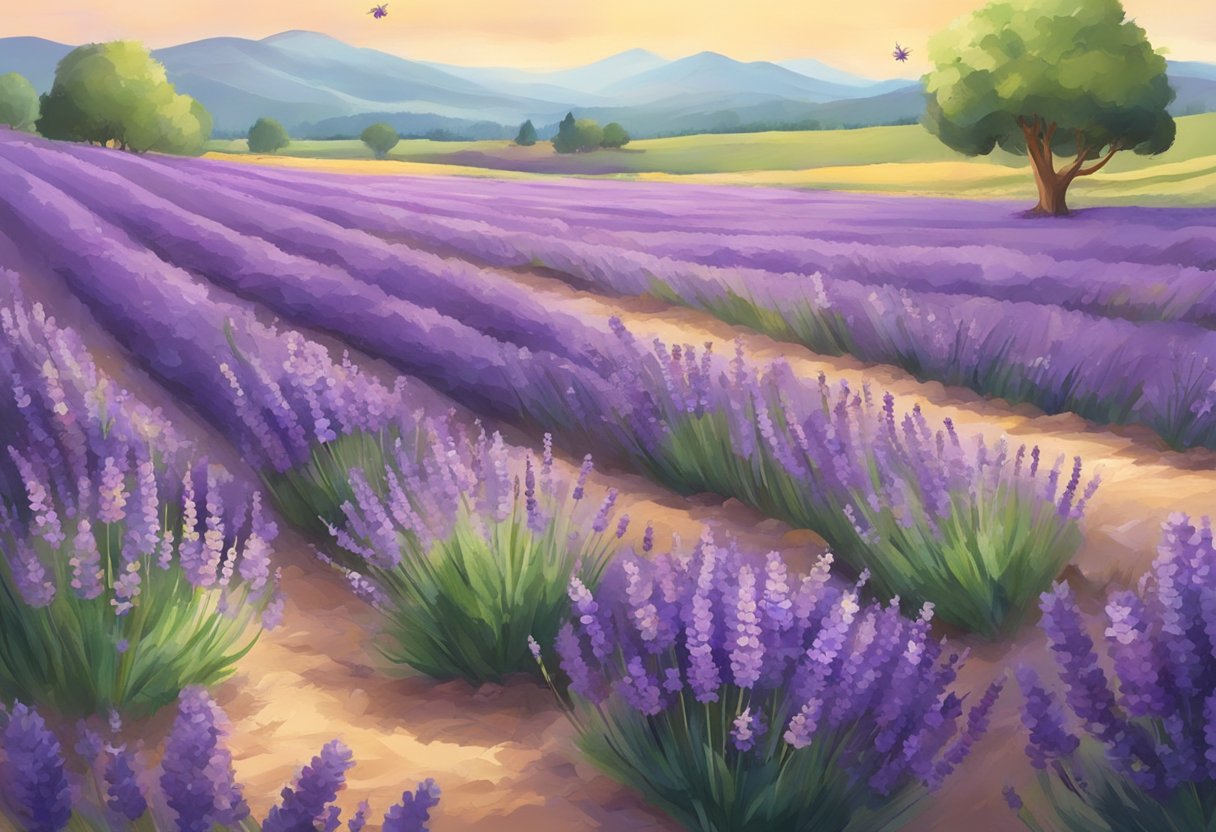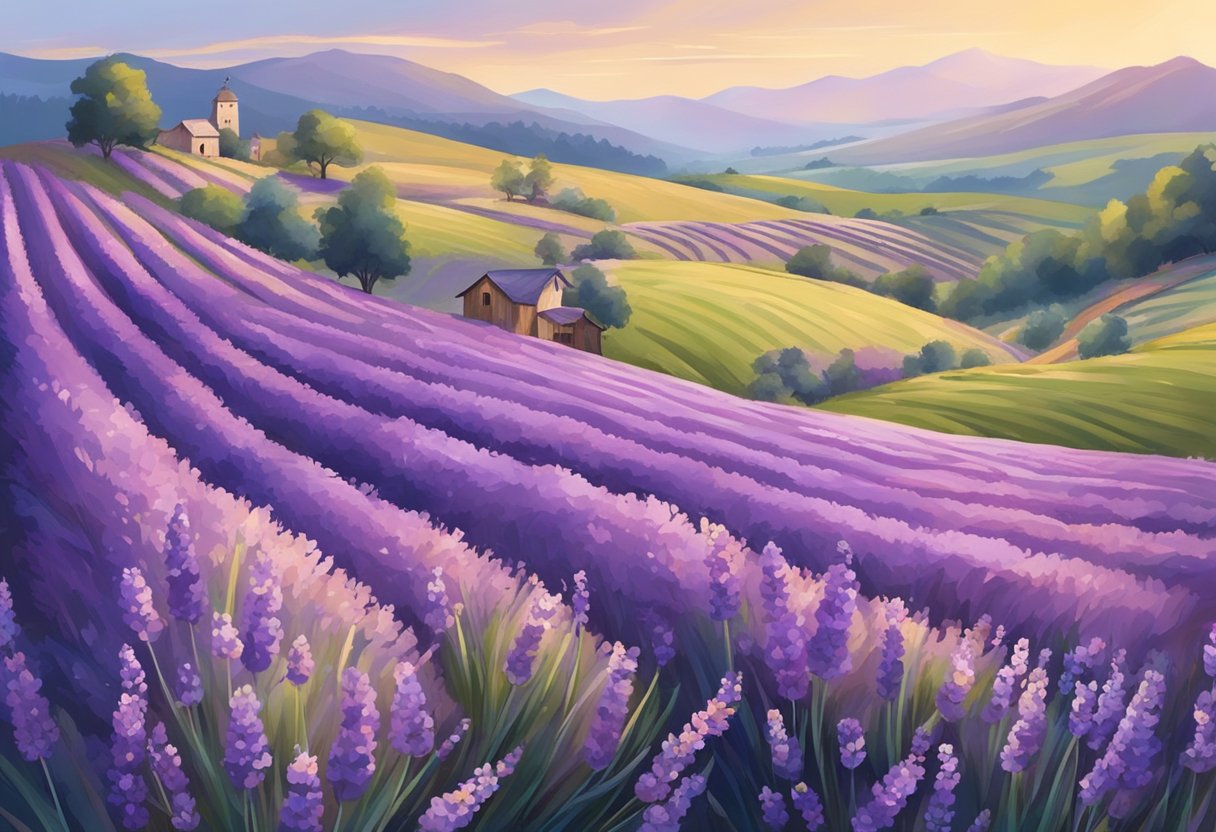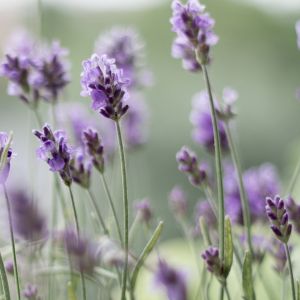When it comes to lavender, many people think of the classic purple flowers with a soothing scent. However, there are actually many different types of lavender, each with their own unique characteristics.
This post may contain affiliate links.
Whether you’re looking to add some fragrance to your garden or use lavender for its medicinal properties, it’s important to know the different types of lavender available.
One popular type of lavender is English lavender, also known as true lavender. This variety is known for its classic fragrance and is commonly used in essential oils and perfumes.
English lavender is also a popular choice for gardens, as it has a compact size and can thrive in a variety of climates.
Related Article: How to Make Lavender Oil: A Simple Guide
Another type of lavender is French lavender, which has a more pungent scent than English lavender. French lavender is often used in cooking and is a popular choice for making lavender-infused honey.
This variety is also known for its long, slender stems and purple flowers, making it a beautiful addition to any garden.
Related Article: Growing Lavender in Pots: Tips and Tricks for a Beautiful Garden
History and Origins
Lavender is a popular plant known for its beautiful flowers and calming scent. The history of lavender dates back to ancient times, where it was used for various purposes. In this section, you will learn about the origins of lavender and its cultural significance.
Ancient Uses
Lavender was first used by the ancient Egyptians, who used it for mummification and perfume. The Greeks and Romans also used lavender for its fragrance and medicinal properties.
The Romans used lavender to scent their baths, while the Greeks used it to cure various ailments.
During the Middle Ages, lavender was used as a natural remedy for headaches, insomnia, and other health issues. It was also used as a natural insect repellent and to freshen up clothes and linens.
Cultural Significance
Lavender has played an important role in Mediterranean culture for centuries. It was used in religious ceremonies and as a symbol of purity and cleanliness.
In addition to its cultural significance, lavender has also been used in cooking. In Mediterranean cuisine, lavender is often used to flavor dishes such as roasted meats and vegetables.
Lavender was also used in traditional Indian medicine, where it was believed to have healing properties. In Ayurvedic medicine, lavender was used to treat skin conditions, digestive issues, and respiratory problems.
Related Article: How Much Water Does Lavender Need: A Guide for Healthy Growth
Lavender Varieties
When it comes to lavender, there are many different types of lavender to choose from. Each variety has its own unique characteristics and uses. Here are some of the most popular types of lavender:
English Lavender
English lavender, also known as Lavandula angustifolia, is one of the most popular types of lavender. It is known for its sweet fragrance and is often used in perfumes, soaps, and candles.
English lavender is also commonly used in cooking and is a popular ingredient in desserts and teas.
Related Article: Deadheading Lavender: A Guide to Promoting Blooms

French Lavender
French lavender, also known as Lavandula stoechas, is a smaller variety of lavender with a more pungent scent. It is often used in potpourri and sachets and is a popular choice for landscaping and garden design.
Spanish Lavender
Spanish lavender, also known as Lavandula dentata, is a unique variety of lavender with toothed leaves and a strong, spicy scent. It is often used in Mediterranean-style gardens and is a popular choice for borders and hedges.
Hybrid Types – Lavandins
Hybrid types of lavender, also known as Lavandins or Lavandula x intermedia, are a cross between English and French lavender.
They are larger and more fragrant than English lavender, but have a less pungent scent than French lavender.
Lavandins are often used in aromatherapy and are a popular choice for making essential oils.
No matter which variety of lavender you choose, they are all beautiful and fragrant plants that can add a touch of beauty and relaxation to your home and garden.
Cultivation and Care
Soil and Planting
Lavender grows best in well-draining soil with a pH level between 6.5 and 7.5. You can test your soil with this inexpensive soil pH meter.
If your soil is heavy or clay-like, mix in some sand or gravel to improve drainage.
When planting lavender, make sure to space the plants at least 18-24 inches apart to allow for good air circulation. Plant in the spring once the soil has warmed up and the danger of frost has passed.
Sunlight and Watering
Lavender loves full sun and requires at least 6-8 hours of direct sunlight per day. Water your lavender deeply but infrequently, allowing the soil to dry out between waterings.
Overwatering can lead to root rot, so be sure not to water too frequently. In areas with high humidity, make sure to plant lavender in a location with good air circulation to prevent fungal diseases.

Pruning and Maintenance
Pruning is an important part of lavender care, as it helps to promote bushier growth and prevent woody stems. In the spring, prune back any dead or damaged branches to just above the new growth.
After the first year, prune your lavender plants back by about one-third of their height in the early spring to promote new growth. In the fall, remove any dead or yellowing leaves to prevent disease.
Lavender is drought-tolerant, so avoid fertilizing too frequently as this can lead to excessive growth and decreased oil production.
Overall, lavender is a relatively low-maintenance plant that adds beauty and fragrance to any garden. With proper care and attention, your lavender plants will thrive for years to come.
Lavender in the Garden
Lavender is a versatile and beautiful plant that can be grown in a variety of garden settings. Whether you have a large garden or a small balcony, there are types of lavender that will thrive in your space. Here are some tips for using lavender in your garden.
Landscape Design
Lavender is a great plant to use in landscape design. Its ornamental qualities make it an excellent choice for borders and hedges. Lavender can also be grown in containers, which makes it a great option for smaller gardens or balconies.
When choosing a location for your lavender, it’s important to consider the climate. Lavender prefers warm, dry climates and well-drained soil.
If you live in an area with high humidity or heavy rainfall, you may need to take extra precautions to ensure your lavender thrives.
Companion Planting
Lavender is also a great companion plant. It can help repel pests and attract beneficial insects to your garden. Lavender is particularly effective at repelling moths, fleas, and mosquitoes.
When planting lavender as a companion plant, it’s important to choose plants that have similar growing requirements.
Lavender pairs well with other herbs, such as rosemary, thyme, and sage. It also pairs well with ornamental grasses and other plants that have a similar texture.
Colors and Fragrances
Color Variations
Lavender plants come in a variety of colors, including blue, purple, white, and pink. Each color variation can have a slightly different shade, with some being darker or lighter than others.
The color of the flowers can also change as they age, with some starting off as a light violet and gradually becoming darker.
Scent Profiles
One of the most appealing aspects of lavender is its fragrant scent. Lavender plants can have a strong scent or a lighter fragrance, depending on the variety. Some lavender plants have a sweet, floral scent, while others have a more herbal aroma.
When choosing a lavender plant for your garden or home, consider the scent profile that you prefer. If you love the calming and relaxing properties of lavender, look for a variety with a strong scent. If you prefer a more subtle fragrance, choose a plant with a lighter aroma.
Uses of Lavender
Lavender has been used for centuries for its numerous benefits. It is a versatile herb that can be used in a variety of ways. Here are some of the most common uses of lavender.
Culinary Applications
Lavender has a sweet, floral flavor that makes it a popular ingredient in many culinary dishes. It is often used to add a unique flavor to desserts, such as cakes, cookies, and ice cream. You can also use lavender to flavor drinks, such as tea, lemonade, and cocktails.
When cooking with lavender, it is important to use the right amount. Too much lavender can make your dish taste bitter and overpowering.
A little goes a long way, so start with a small amount and add more as needed.
Aromatherapy and Cosmetics
Lavender is well-known for its calming and relaxing properties. It is often used in aromatherapy to help reduce stress and anxiety.
You can use lavender essential oil in a diffuser, or add a few drops to your bath water for a soothing soak.
Lavender is also a popular ingredient in cosmetics. It is often used in skincare products, such as lotions, soaps, and scrubs, due to its antibacterial and anti-inflammatory properties. Lavender oil can also be added to hair products to help promote healthy hair and scalp.
Crafts and Decorations
Lavender is a popular choice for crafts and decorations. Dried lavender flowers can be used to make potpourri, sachets, and wreaths. They can also be added to homemade soap and candles for a natural scent.
Lavender is also a popular choice for wedding decorations. It can be used in bouquets, centerpieces, and even as a toss for the bride and groom.
Growing Lavender in Containers
If you are short on space or do not have a garden, growing lavender in containers is an excellent option. It is also a great way to add a touch of color and fragrance to your balcony or indoor garden. Here are some tips for growing lavender in containers:
Pot Selection
When selecting a pot, choose one that is at least 12-16 inches deep and wide enough to accommodate the plant’s root system. Make sure the pot has drainage holes to prevent waterlogging.
Lavender prefers well-draining soil, so consider adding perlite or sand to the potting mix to improve drainage.
Balcony and Indoor Gardening
Lavender can thrive in both indoor and outdoor settings. If you are growing lavender on a balcony, make sure it gets at least 6 hours of sunlight per day.
If you are growing lavender indoors, place the pot near a south-facing window where it can get plenty of sunlight. You can also supplement with artificial light if needed.
Compact varieties of lavender, such as ‘Munstead’ and ‘Hidcote,’ are ideal for container gardening. They grow to a height of 12-18 inches and have a compact growth habit, making them perfect for small spaces.
Remember to water your lavender regularly, but do not overwater as this can lead to root rot.
Harvesting and Preservation
Optimal Harvesting Time
Lavender plants are at their peak when they are in full bloom. The optimal time for harvesting lavender is in late summer when the flowers have just started to fade.
The best time of day to harvest lavender is in the morning, after the dew has evaporated but before the sun is too high in the sky. This is when the essential oils in the flowers are at their highest concentration.
When harvesting lavender, it is important to cut the stems with sharp shears or a knife. Cut the stems just above the foliage, leaving about one-third of the plant intact. This will allow the plant to continue to grow and produce flowers in the future.
Drying Techniques
Drying lavender is essential for preserving the fragrance and flavor of the flowers. There are several methods for drying lavender, including air-drying, oven-drying, and using a dehydrator.
Air-drying is the most traditional method for drying lavender. Simply tie the stems together with twine and hang them upside down in a cool, dry place. This method can take several weeks, but it is the most natural way to dry lavender.
Oven-drying is a quicker method for drying lavender. Preheat your oven to 180°F (80°C) and spread the lavender stems out on a baking sheet.
Place the baking sheet in the oven and leave the door slightly ajar to allow moisture to escape. Check the lavender every 10-15 minutes and remove it from the oven when it is dry to the touch.
Using a dehydrator is the fastest method for drying lavender. Simply spread the lavender stems out on the dehydrator trays and set the temperature to 100°F (38°C). The lavender should be dry in 1-2 hours.
Whichever method you choose for drying your lavender, be sure to store the dried flowers in an airtight container in a cool, dark place.
This will help to preserve the fragrance and flavor of the flowers for many months to come.
Frequently Asked Questions
What are the different varieties of English lavender?
There are several varieties of English lavender, including Hidcote, Munstead, Royal Velvet, and Vera. Each variety has its own unique characteristics, such as size, color, and fragrance.
What are some rare lavender varieties I might not know about?
Some rare lavender varieties include Lavandula stoechas, Lavandula dentata, and Lavandula multifida. These varieties have unique characteristics and are worth exploring if you’re a lavender enthusiast.
Which lavender variety has the most potent fragrance?
The Lavandula angustifolia variety, also known as English lavender, is known for its strong and sweet fragrance.
However, the potency of the fragrance can vary depending on the growing conditions and the time of year.
Could you explain the differences between common lavender species?
There are several common lavender species, including Lavandula angustifolia, Lavandula stoechas, and Lavandula x intermedia.
Each species has its own unique characteristics, such as size, color, and fragrance.
What are the characteristics of the ‘Phenomenal’ lavender variety?
The ‘Phenomenal’ lavender variety is known for its hardiness and resistance to disease and pests. It has a silvery-green foliage and produces long stems of fragrant lavender flowers. This variety is a great choice for gardeners looking for a low-maintenance option.
Follow my lavender board on Pinterest.



